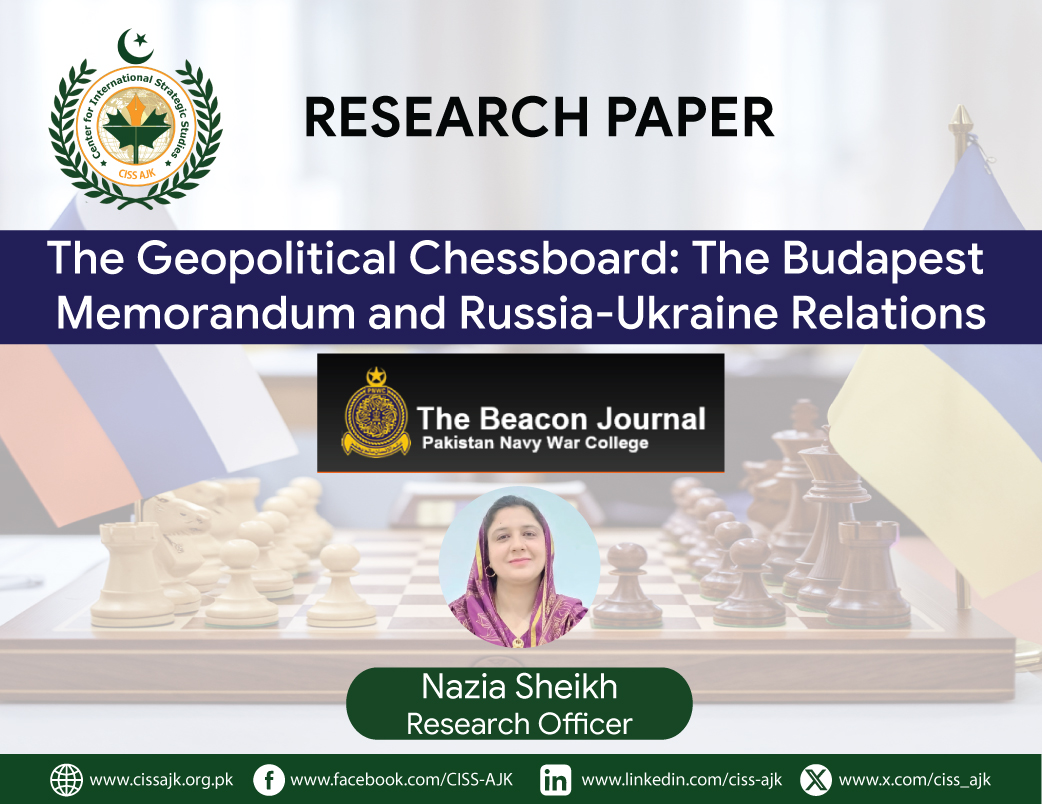The US, UK, and Russian Federation, who met on December 5, 1994, in Budapest, Hungary, provided security assurances in conjunction with Ukraine,s admission to the Nuclear Non-Proliferation Treaty (NPT) as a non-nuclear-weapons state. After long discussions, the parties signed the Budapest Memorandum, which declared that Ukraine would give over all nuclear weapons to Russia for destruction and hand over its third-biggest nuclear weapons, which it had inherited from the fall of the Soviet Union. The parties to the agreement pledged to refrain from using or threatening to use force against Ukraine, as well as to respect the country, ‘s borders and territorial integrity. Russia violated these commitments in 2014 when it annexed Crimea. This study delves into the complex structure of geopolitical events, with a focus on the memorandum,s involvement in the ongoing Russia-Ukraine war, as well as how geopolitical strategies and interests interact with the Budapest Memorandum in the context of the Russia-Ukraine conflict. Tensions between the two countries increased, bringing together power conflicts, cultural ties, and historical relationships to produce the present situation. This study critically evaluates the initial promises of the Budapest Memorandum, its subsequent influence on Ukraine, ‘s security policies, and its relevance to contemporary challenges. This study also explores how the Budapest Memorandum influenced the strategic narratives of both sides and how other global powers and organizations played a role in mediating or exacerbating the conflict. This study examines primary and secondary sources using qualitative research methodology. This research investigates the Russia-Ukrain conflict through realism and Halford Mackinder’s Heartland theory.
The Geopolitical Chessboard: The Budapest Memorandum and Russia-Ukraine Relations
The Geopolitical Chessboard: The Budapest Memorandum and Russia-Ukraine Relations
516



